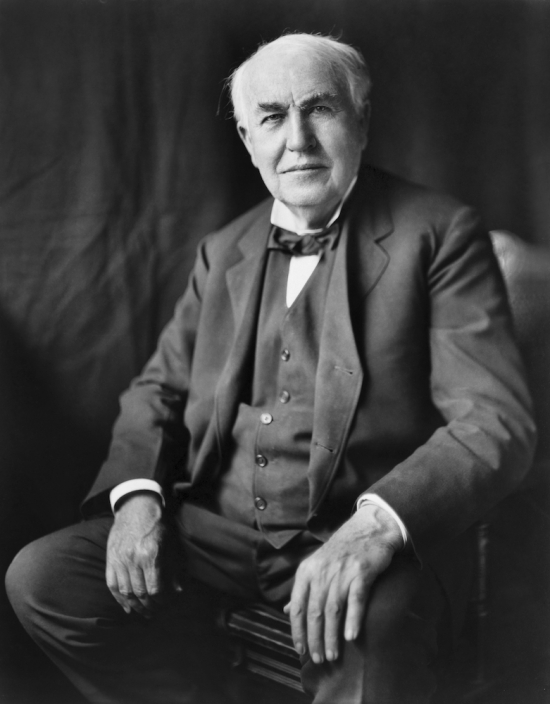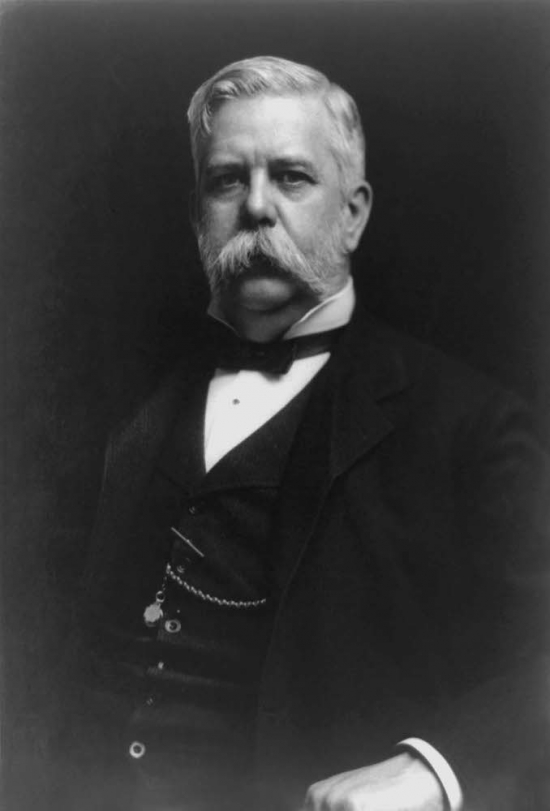Seven little lessons to rediscover our everyday life.
Seven days for the Creation... of a new perspective.
The well-known detail: In our room, we turn on the light: a mechanical gesture we take for granted, and repeat every day. We don’t even look at that switch anymore, and we find nothing special in the bulb lighting up the room.
The background: The flow of electric charge can be unidirectional (direct current, DC) or reverse direction many times a second (alternating current, AC). At the end of the 1880s, Thomas Edison had developed the direct current system, which was reliable but had a serious issue: it could cover a distance of only one mile off the power plant where the current was produced. George Westinghouse’s alternating current, instead, could be efficiently transmitted over long distances, but at that time it was a complex and experimental system which was not sufficiently understood even by engineers.
In order to corner this emerging market, the Edison and the Westinghouse companies embarked on a no-holds-barred propaganda campaign, which was called “the War of the Currents” by the press. Each of them claimed his own solution was better and safer than the other one; during this controversy, Harold Brown, an electrical engineer (no one had ever heard about him before), decided to take side and launched a crusade against AC. Determined to demonstrate how dangerous the alternating current was, he paid some local children to collect hundreds of stray dogs off the streets, then he killed the dogs one by one, connecting them to a generator of the kind used by Westinghouse. He claimed his tests undoubtedly proved how risky it was to use AC—but indeed, his study didn’t follow a scientific method. Brown decided to give a public demonstration of his ‘findings:’ on the 30th of July 1888, he subjected a dog to several shocks of direct current up to 1000 volts (to prove the animal would survive). When he applied a 330-volt shock of alternating current, the animal died with a last, ghastly bark. This show had a boomerang effect, because it only achieved the result of scandalizing the audience: not only was the experiment uselessly cruel but, since the dog received the lethal shock when he was already exhausted by the previous ones, this brutal charade did not prove at all that one kind of electricity was more dangerous than the other. For this reason, four days later, Brown repeated his demonstration and this time killed three dogs with one single 330-volt shock of AC. But even this attempt did not achieve the desired result of swaying public opinion, since shortly afterwards it turned out that Harold Brown wasn’t an independent researcher but Edison had hired him in order to discredit his competitor.
The War of the Currents reached its peak in 1890 when the State of New York decided to replace hanging with the electric chair. Under Edison’s pressure, they opted for AC as “lethal current.” It was a body blow to Westinghouse, who in the meantime had managed to get Nikola Tesla’s patent for a polyphase induction motor. Thanks to this and other technical improvements, Westinghouse won the war and, in 1895, brought to completion a huge power plant on the Niagara Falls.
Edison never resigned to the defeat. In 1903, he volunteered to electrocute with alternating current Topsy, a female elephant guilty, it is claimed, of killing two circus keepers. On the 4th of January, at 2.45 pm, the pachyderm was electrocuted with a 6600-volt shock, in front of Edison’s cameras filming the execution. But not even this last macabre feat succeeded in giving a bad name to alternating current, which had already become the standard both in the US and in Europe. And which still turns on our lightbulbs today.
The First Lesson: Current is “all well and good,” it is even fundamental, but it costed the life of a lot of animals, sacrificed in such an insane way only to win a patent war. This may suggest us an uncomfortable but essential thought—light is often matched with shadow, and every glow necessarily involves some darkness. As Bob Dylan sings: “Behind every beautiful thing, there’s been some kind of pain.”


